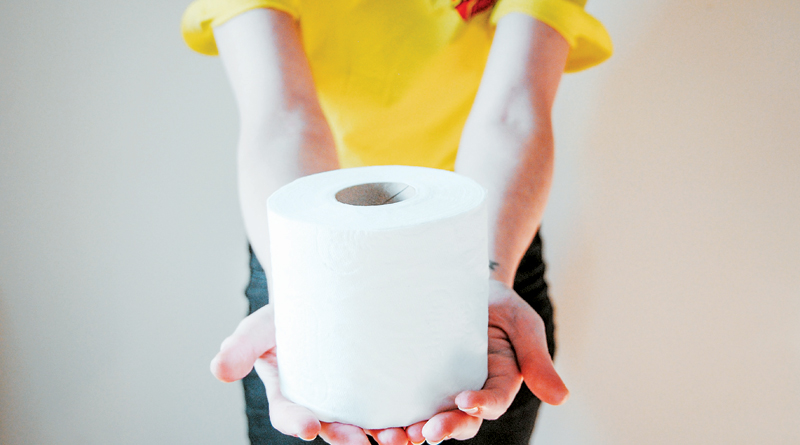Toilet Paper’s Dirty Past ~ The History of Ordinary Things

What did humans use to clean themselves in the days BEFORE toilet paper? Naturally, they used what was readily available. The simplest way was physical use of one’s hand, but any alternative was likely preferred.
Different materials were used depending upon the country, weather conditions, social customs, and status. Ancient Greeks used clay and stones. In the era of Roman baths, men used a communal sponge on a wooden stick, which soaked in a bucket of salt water between uses. In coastal regions, mussel shells and coconut husks were available. Eskimos used moss or snow. Vikings used wool. Mayans and early/rural Americans used the cobs from shelled ears of corn. Other handy options were hay, leaves, grass, ferns, maize, fruit skins, animal fur, and later, fabric, newspaper, magazines, and pages of books.
The first paper-like toilet paper was made in 1391 for the needs of the Chinese Emperor’s family. By the late 1500s, paper became more readily available, resulting in the advent of the newspaper which became a popular choice for wiping.
In 1857, Joseph C. Gayetty created the first commercially packaged toilet paper, a manila hemp infused with aloe. It was marketed for those with hemorrhoids. His product was failed, in part because people did not want to BUY toilet paper when FREE catalogs came in the mail and old sheets, or clothes were available to use.
American Seth Wheeler is credited with the invention of toilet paper. In 1871, he patented the first toilet paper on a roll, but did not put it into production until 1897. In 1880 toilet paper was sold in boxes of individual squares.
In 1878, Clarence and Irvin Scott formed the Scott Paper Company introducing tissue on a roll, but direct sales were limited. At the time, any reference to bodily functions was considered impolite, thus the public were hesitant to openly buy toilet paper. Scott Company marketed to hotels becoming the leading toilet paper company in the world by 1925.
In 1897, perforated sheets on a roll were marketed by the Albany Perforated Wrapping Paper Company.
By the 1900s, people had replaced corn cobs and other organic materials with whatever paper they had on hand. The mail order catalogs were repurposed to the outhouse (until printed on glossy paper). Americans nailed the “Farmer’s Almanac” to the outhouse wall, leading the company in 1919, to pre-cut the legendary hole in the upper left corner of the magazine. An old-timer remembered that during peach season, the individual tissue wraps were used in the outhouse.
By the 1930’s, most urban populations had access to municipal running water, and thus, the advent of flushing indoor toilets in private homes. (This came about fifteen years later, or ~mid 1940s, for rural areas.) The flush toilets with their newfangled indoor plumbing systems required a product that could flush away without clogging or damaging the pipes. Americans quickly embraced toilet paper.
That said, the quality of paper production varied widely. In fact, splinters were a common problem with early toilet paper. In 1935, Northern Tissue introduced splinter-free toilet paper!
In 1928, the Hoberg Paper Company introduced Charmin using a marketing campaign focused on softness and femininity, thus avoiding reference to the paper’s actual purpose. Charmin came in the economy-size pack of four rolls in 1932. Do you remember the Mr. Whipple, the TV grocer of the 1970s who implored customers, “Please don’t squeeze the Charmin”?
In 1942, the first two-ply toilet paper was introduced in England. Today two-ply is the standard. In 1990, the UK introduced moist toilet paper which was marketed in the U.S. in 2001 by Kimberly-Clark.
According to the toiletpaperhistory.net, the average person uses over 100 rolls per year, 69 sheets of toilet paper each day, 8-9 sheets per use. Each day 83 million rolls are manufactured. Market growth is focused on developing countries where some studies suggest that 4 billion, or more than 70% of people, do not use toilet paper due to cost and custom.
- Rain & Shine, A Millennia Of Innovation: The History of Ordinary Things - July 19, 2024
- Crayons Through The Ages ~ The History of Ordinary Things - June 21, 2024
- The Rocking Chair Revolution ~ The History of Ordinary Things - May 24, 2024


